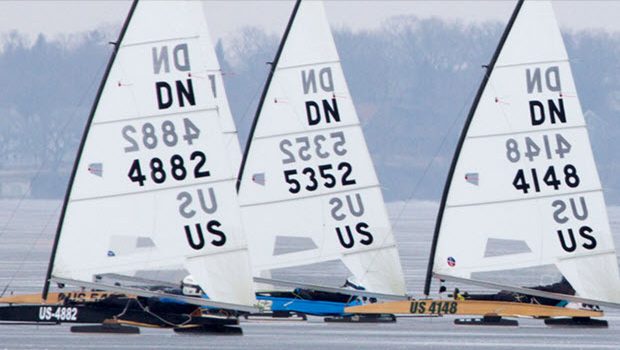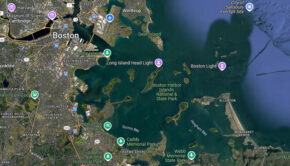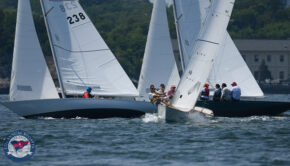Looking after the herd
Published on March 29th, 2020
by Craig Leweck, Scuttlebutt Sailing News
The principal of one design racing is for boats of similar characteristics to be presented to the water and wind such that it is the skill of the sailor that determines the outcome of the race.
There are two essential variables that determine the type of one design class: how similar the equipment will be, and what limitations are put on that equipment. The more latitude given, the more the racing becomes about the equipment.
While sailing will always be an equipment game, increasing the cost and commitment impacts participation, so as one design class rules lay the baseline, how a class evolves over time must consider the impact of change on participation.
How class organizations face these issues speaks for who they are. An example now is the International DN Ice Yacht Racing Association – the organization that oversees the DN, the most popular iceboat in the world.
Here are four proposed changes class members are now voting on:
(1) Deletion of the existing specification of mast minimum weight.
(2) Deletion of the existing technical specification of minimum mast balance point height.
(3) Amendment of the materials specification of the ‘wood type’ runner body.
(4) Amendment of the minimum thickness of insert plate dimensions of the wood type runner with steel insert (insert runner).
I received a class email that shared the opinion of Paul Goodwin, who is said to be someone who knows and cares about the class. Based on his position on the issues, I agree that he is looking after the herd:
My take on the 2020 Proposals – Paul Goodwin
The first two proposals are to change specs that were written when the class first made the transition from wood to composite masts. It was clear at the time that the composite mast would make the older mast technologies obsolete, at huge cost to class members.
However, this change was justified because we were breaking the older masts at an alarming rate. The idea behind the minimum weight and balance point specs was to reduce the incentive to constantly look for the latest, greatest, high-tech (and expensive) composite mast material.
1) Deletion of the minimum weight for the mast –
I think removing the minimum weight will not be good for the class. The intent of this spec is to discourage using exotic (and expensive) materials. High modulus carbon fiber comes to mind, but there are potentially more exotic and expensive fibers available. I believe eliminating the min weight will accelerate a technology war leading to lighter and more expensive masts. Sailors will have mast envy, with the perception that lighter is better, driving the cost of masts ever higher. My Vote: NO
2) Deletion of the balance point on the mast –
The reason for the balance point was to make a builder put some of the ballast up higher in the mast, rather than building a super light mast with a big chunk of weight at the base. I think the spec is still valid. I don’t want to make it easier to build super light, expensive masts. In the overall cost of building a pre-preg carbon mast in an autoclave, the time and cost of adding ballast is insignificant. My vote: NO
3) Allow runners to be built of any material –
I think this proposal has no merit at all. I challenge everybody to think about how they would use this change to design a runner body that reduces the cost, and at the same time remains competitive against the super stiff lightweight carbon bodies that will be coming when there is no restriction on design and material. The DN is not the class for a rule that allows unlimited use of exotic materials. My vote: NO
4) Amend the minimum thickness of insert plate to allow commercial material tolerance –
This one makes sense. The reduction in thickness allows use of commercially available steel, which can reduce the cost and is easier to find. The change is so small that it is insignificant for performance. My vote: YES.









 We’ll keep your information safe.
We’ll keep your information safe.